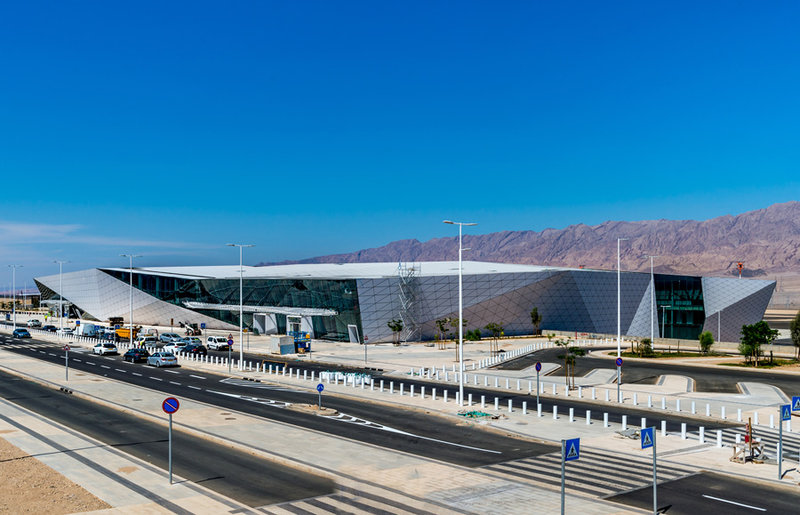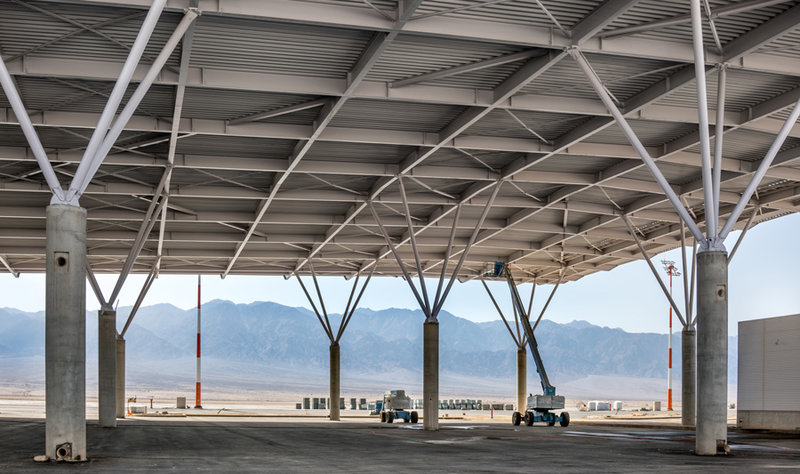Destinations
Are Israel’s airports poised for growth?
The
future
of US air
traffic control:
the third option?
After years of delays, Israel’s new Ramon International Airport is set to begin operations in the southern resort town of Eilat. The government says it will soon attract one million foreign visitors to the region per year, but critics worry it will become an expensive “white elephant” instead. Patrick Kingsland explores the debate.
O
n 21 April 2013, the Israeli Government and European Union ratified an “Open Skies” agreement, designed to boost air traffic and tourism to Israel by creating competition with foreign carriers operating in the Middle Eastern country.
The deal suffered a rocky start, with Israel's three main airlines (El Al, Israir and Arkia) opposed to the agreement and thousands of local airline workers deciding to strike.
But five years on, Israel is now experiencing a boom in air travel, which the Israeli broadsheet newspaper Haaretz recently described as “nothing less than a revolution”.
Image: Boris-B / Shutterstock.com
“A unique national project”
Flying to Israel today is cheaper than ever before and travellers are making the most of it. According to recent statistics from Israel’s Ministry of Tourism, 2.4 million tourists have visited the country so far in 2018, a 46% increase on the same period in 2016.
“The marketing efforts and activities that we are spearheading in the ministry are leading us to new records,” tourism minister Yariv Levin said in a recent statement.
With the Open Skies agreement in place, Israel is now planning to grow its tourism industry even further. After years of delays, the state-of-the-art Ramon International Airport saw its inaugural flight land in July – an Arkia passenger plane travelling from the city of Tel Aviv.

Image: Boris-B / Shutterstock.com
The airport – which is expected to become fully operational in March 2019 – will serve as a gateway to southern Israel, with the capacity to handle up to two million passengers per year and an infrastructure specifically designed for budget carriers.
It will take over from Eilat’s aging J. Hozman Airport, which is designed for smaller, domestic flights, and Ovda military airport, which serves larger planes but is located 60km away from the city. The Israel Airports Authority (IAA) described Ramon as “a unique national project” with the potential to fundamentally improve the fortunes of Eilat.
Eero Knuutila is Head of Service Development at Helsinki Airport.
Image courtesy: Helsinki Airport
The airport will serve as a gateway to southern Israel
Tourism dwindles in the wake of conflict
Of course, the five years since the Open Skies agreement have not been without their challenges. In July 2014, Israel launched Operation Protective Edge, its third major military offensive in the Palestinian territory of Gaza in recent years. The 50-day-long war left more than 2,200 people dead, the vast majority of them Palestinian civilians.
In the aftermath of the conflict, tourism in Israel dipped by as much as 30% - with nowhere affected quite as badly as Eilat. Tourist arrivals for the 2014-15 winter season dropped by 68% to 37,800, while room bookings fell by almost half, to 406,000.
“Eilat almost disappeared from the map of international tourism,” Levin told Reuters earlier this year. “We saw only four (international) flights a week to Eilat three years ago, which is almost nothing. From next winter, we will probably see more than 50 and maybe even 60 flights per week.”
Security challenges during the 2014 war also posed problems for airports. When a Hamas-fired rocket landed close to Israel’s main Ben-Gurion International Airport, the US Federal Aviation Authority temporarily stopped carriers from landing, triggering a wave of suspensions from other foreign airlines.

Image courtesy of
The incident is part of the reason why Ramon Airport has faced so many delays since construction began more than five years ago. After the crisis at Ben-Gurion, Israel’s transportation minister Israel Katz decided Ramon should have the capacity to absorb traffic if a similar emergency occurred again. He subsequently ordered a number of changes to Ramon’s original design, such as extending the length of its runways by 500m to 3.6km and doubling the airport’s capacity for parked planes.
"In an emergency, not only will Israel's entire passenger air fleet be able to land and park there, but also additional aircraft," IAA spokesperson Ofer Lefler told AFP news agency.
A 26m-high, 4.5km-long “smart” fence with sensors and detection technology has also been installed to help protect the airport, which lies next to the Jordanian border.
“Someone may fire a missile at the new airport and then it would be gone,” a senior officer in the Israeli Defence Forces told the Jerusalem Post. “This fence will stop the missiles.”
Eilat almost disappeared from the map of international tourism
Critics warn of a “white elephant” project
The airport is not without its critics, however. Many say the facility, which will cost around $500m, is too big for Eilat and could end up as an expensive “white elephant”.
As things stand, Eilat’s winter tourism season depends largely on government-issued subsidies, introduced in the aftermath of the 2014-15 crisis.
Airlines currently receive $70 for every overseas passenger flown in during this period. But if the subsidies were stopped many say Ramon airport would end up under capacity for large parts of the year.
“It wouldn’t become a white elephant, but a little white elephant that for most of the year would be used only by Israeli airlines,” an unnamed source close to the Ramon project told Haaretz newspaper. “In the winter season only a few airlines would continue without subsidies.”

Image: Boris-B / Shutterstock.com
Growth may also be limited by the fact that many of Eilat’s international visitors are “one-timers”. They come in via the subsidised budget airlines “but then discover that prices in the city itself are high – so they don’t return,” argued a Haaretz journalist. “Eventually, the critics say, the subsidies will stop generating enough traffic.”
But many locals in Eilat, which sits at the southern edge of the Negev desert, still seem positive. The new airport is part of a wider strategy to bring tourists to Israel’s desert region. Government officials hope to boost the area’s share of national tourism revenue from five to 20% in the coming years.
From outdoor camping with the Negev’s nomadic Bedouin tribe, to Eilat’s reefs and beaches, locals say the region has plenty of tourist potential – all it needs now is an airport to transport them.
“From all aspects the new Ramon Airport is a blessing for Eilat,” Liza Bvir, spokesperson for the IAA told The Media Line.
Eero Knuutila is Head of Service Development at Helsinki Airport.
Image courtesy: Helsinki Airport
From all aspects the new Ramon Airport is a blessing for Eilat